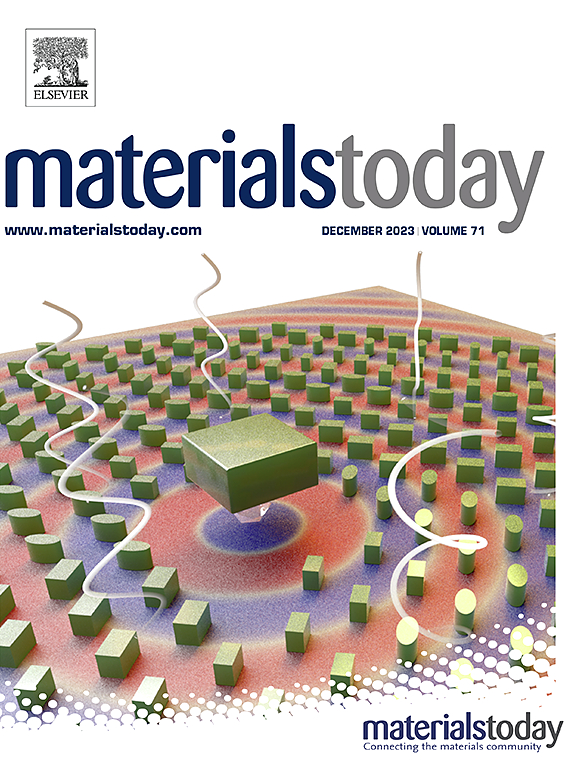氧化铋电解质具有优异的导电性和稳定性
IF 21.1
1区 材料科学
Q1 MATERIALS SCIENCE, MULTIDISCIPLINARY
引用次数: 0
摘要
高导电性电解质对于降低工作温度和提高许多固态氧离子导电技术的可行性是必不可少的。不幸的是,最高氧离子导电电解质,掺杂立方氧化铋,只能在600℃以上使用,因为阴离子顺序低于这个温度。在此报告中,我们已经定制了氧化铋电解质的结构,以允许在高温和低温下都具有功能。在更高的温度下(≥600°C),我们已经证明了在相稳定(在650°C下运行100小时)的电解质中,具有最高氧离子电导率的立方Bi2O3。同时,在较低温度下(<600°C),开发出具有优异稳定性的菱形Bi2O3电解质,在500°C老化100 h时,其电导率没有明显下降,从而使其成为低温固体氧化物电池(soc)中性能稳定的最高氧离子导电电解质。本文章由计算机程序翻译,如有差异,请以英文原文为准。
Bismuth oxide electrolytes with superior conductivity and stability
Higher conductivity electrolytes are imperative for the reduction of operating temperature and increased viability of numerous solid-state oxygen-ion conducting technologies. Unfortunately, the highest oxygen ion conducting electrolyte, doped cubic bismuth oxide, is only useable above 600 °C due to anion ordering below this temperature. Reported herein, we have tailored the structure of the bismuth oxide electrolyte to allow functionality at both high and low temperatures. At higher temperatures (≥600 °C), we have demonstrated a cubic Bi2O3 with the highest oxygen-ion conductivity ever recorded for a phase stable (demonstrated for 100 h of operation at 650 °C) electrolyte. Meanwhile, at lower temperatures (<600 °C), a rhombohedral Bi2O3 electrolyte was developed with exceptional stability, exhibiting no observable conductivity decay for 100 h of aging at 500 °C, thus making it the highest oxygen ion conducting electrolyte with stable performance for lower temperature solid oxide cells (SOCs).
求助全文
通过发布文献求助,成功后即可免费获取论文全文。
去求助
来源期刊

Materials Today
工程技术-材料科学:综合
CiteScore
36.30
自引率
1.20%
发文量
237
审稿时长
23 days
期刊介绍:
Materials Today is the leading journal in the Materials Today family, focusing on the latest and most impactful work in the materials science community. With a reputation for excellence in news and reviews, the journal has now expanded its coverage to include original research and aims to be at the forefront of the field.
We welcome comprehensive articles, short communications, and review articles from established leaders in the rapidly evolving fields of materials science and related disciplines. We strive to provide authors with rigorous peer review, fast publication, and maximum exposure for their work. While we only accept the most significant manuscripts, our speedy evaluation process ensures that there are no unnecessary publication delays.
 求助内容:
求助内容: 应助结果提醒方式:
应助结果提醒方式:


